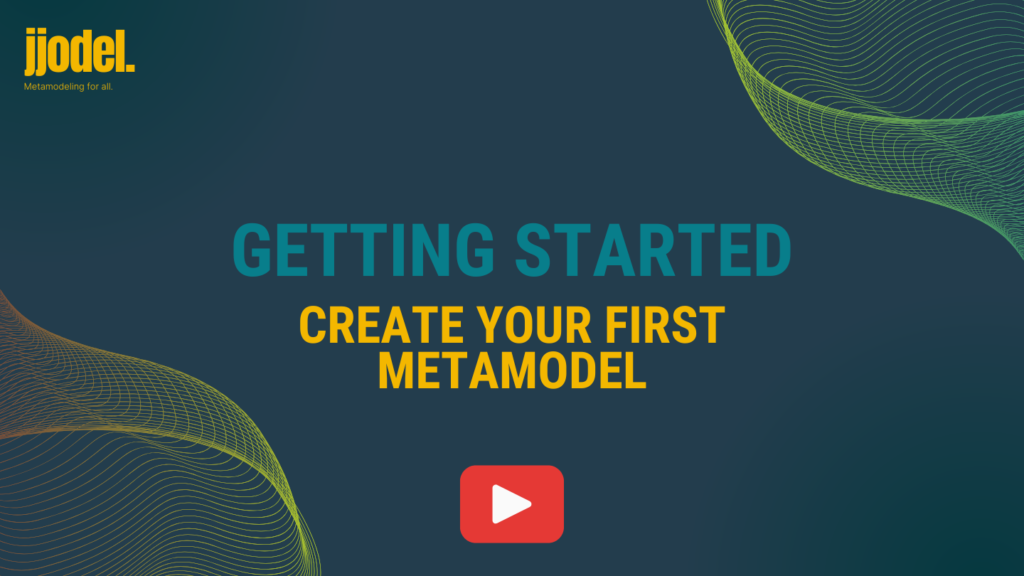Create your first metamodel
In this section, you’ll learn how to create a metamodel and its corresponding model in Jjodel. Metamodels define the structure of your modeling language, while models are the instances of those structures. Follow these steps to design your first meta/model and start your modeling journey.
The whole procedure is also illustrated in the following video:

Create your first Metamodel
This video provides a clear, step-by-step walkthrough for creating a basic Person-Organization metamodel in Jjodel. It demonstrates how to define key classes (Person and Organization), add attributes (name, age, industry), and establish relationships like belongsTo. Designed for beginners, the video emphasizes simplicity and guides viewers through the process of building and visualizing their first metamodel, making it an excellent starting point for learning metamodeling.
Create a New Metamodel
The first step is to create a metamodel that defines the core building blocks of your language.
1. Open the Main Menu:
- – Navigate to the upper-left corner of the dashboard and click on the ‘Main Menu’ icon.
- – Select ‘New Metamodel’ from the dropdown options.
-
2. Name Your Metamodel:
- – In the dialog box that appears, provide a name for your metamodel (e.g.,
MyFirstMetaModel) and confirm.
3. Define Classes, Attributes, and Relationships:
- – Give focus to the Metamodel Editor (right-hand side with respect to the property tab).
- – Use the tools on the left panel to add classes, attributes, and relationships to your metamodel. For example:
- – Create a
Personclass with attributes likename(EString) andage(EInt). - – Add a relationship to a new
Organizationclass.
- – Create a
4. Save your Metamodel
- Click the Save button in the Main Menu to store your progress.

Create a Metamodel for a Simple UML Class Diagram
This video provides a step-by-step guide to creating a simple UML class diagram metamodel. Viewers will learn how to define core elements such as classes, attributes, and relationships, building a foundational structure for UML modeling. With clear explanations and hands-on examples, the tutorial simplifies metamodeling concepts, making it accessible for both beginners and those looking to reinforce their skills

